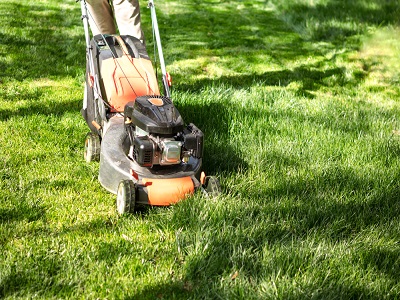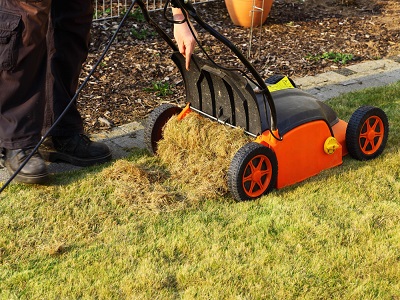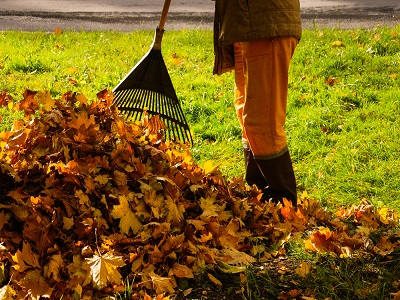
You water, weed, fertilize, mow, edge, and you can’t seem to grow the lush, healthy lawn you want. What’s the problem? These are common lawn care mistakes that you could be making.
1. Water your lawn daily or every other day
Regular watering encourages roots to stay near the surface of soil where they are more vulnerable to injury from pets and people walking on them. Your lawn is also more susceptible to drought stress in hot or dry conditions.
It can get worse. It gets worse. This prevents your turf from thriving and can lead to diseases. Frequent irrigation can also encourage harmful insects. These insects attract moles which tunnel through the soil and literally undermine all your hard work.
Deep and frequent irrigation is the best option for most residential lawns. Bermuda and zoysia, warm-season turf grasses, have the highest drought tolerance. Centipedes and St. Augustine are more sensitive to drought. Tall fescue, a cool-season grass that is most common in South Carolina, requires irrigation to maintain its beauty during the summer months.
One inch of water per week is a good recommendation for all warm-season grasses. Apply the entire inch to clay soils. Apply half an inch twice a week to lighter soils. The application should penetrate the root zone to 8-10 inches. After that, let the grass dry completely before you water again.
Collect many straight-edge containers with similar sizes to get an accurate measurement of your sprinkler’s output. Cat food or tuna fish cans work well; plastic food storage containers are fine if they’re not bowl-shaped. The containers should be placed in different areas of the irrigation zone. Turn on the sprinkler system, and let it run for 15 minutes. Measure the water level in each container with a ruler. This will tell you how long the system should run to reach the recommended irrigation level. This test should be done in every zone if you have an automatic sprinkler system.
Supplemental irrigation might be required in hot or dry conditions. If the lawn has a bluish hue or the blades are folded up, it’s time for you to water again. In the evening, walk across your lawn. If your grass remains flat in your footprints, water it the next morning.
2. Watering your lawn in early evening or the afternoon
Your grass and you will be disservice if you water your lawn in the evening or early morning. Watering your lawn before sunrise is the best practice.
Evaporation can cause as much as 20% to 30% of irrigation water to evaporate if it is applied in the afternoon. Even under the best conditions, about 2 percent of the water makes it to the roots. This fuels photosynthesis, which creates lush green growth. The remaining 98 percent is lost to the atmosphere through transpiration.
Plants are most vulnerable between 10 a.m. to 4 p.m. These are the best times to expose plants to sunlight and temperature. You should wait until the afternoon before you water the grass. The grass will not be able to produce its own food for most of the day.
The downside to routinely watering in the evening is that it doesn’t allow enough time for the blades to dry off before the dew falls, and creates a humid microclimate around them. This encourages diseases such as grey leaf spots, curvularia fungus and rust.
Pre-dawn watering is the best practice. The leaves can dry all day if irrigation is done between 2 and 9 a.m. Lawns and other plants in the area can photosynthesise throughout the day.
3. The lawn can be slopped
Routine mowing can be an important part of effective lawn care in Conway SC. But if your turfgrass looks like a drill instructor’s crew, it’s too much.
Your mower depth should not exceed one-third of the grass blade. Cutting the grass deeper can cause the grass to use more energy for developing healthy roots. This promotes stem growth. The grass’s density is affected by this increase in water and nitrogen consumption. Regularly trimming the lawn can cause it to enter dormancy earlier, and your lawn may suffer from more heat stress and cold damage.
Clippings can be quickly broken down and fed to the soil if you mow at the right height and frequency. Clippings don’t contribute to thatch, contrary to popular belief. Clippings contain 30 percent nitrogen and can be incorporated into the soil to reduce fertilizer needs.
Each turfgrass has a preferred height for mowing. To help thicken the lawn, keep the grass cut at a lower point in the season. To help the grass cope with the heat, increase the mowing height as the weather warms up. Keep the mowing height at the highest recommended level as the grass goes dormant in fall to help warm-season grasses such as St. Augustine and centipede withstand winter temperatures.
4. Mowing with a dull knife
When mowing, it is essential to use a sharpened edge. A dull blade can cause ragged cuts, which will give your grass a whitish appearance and stunt growth. At least once per year, sharpen or replace your mower blades.
5. Incorrectly applying fertilizer
Each type of turfgrass has its own nutritional requirements. Centipede grass requires very little nitrogen compared to other grasses. Centipede grass requires only 1 pound per 1,000 feet of area per year. Bermuda has higher fertilizer requirements and needs 3 to 4 pounds per 1,000 square feet. Calculate your square footage by multiplying the property’s width by its length, then subtracting the square footage of your house, flower beds, and driveway.
It’s a good idea to test your soil for a better understanding of your landscape’s fertilizer requirements. Check out “Digging up answers using soil samples”
It is equally important to choose the right fertilizer. You should not fertilize warm-season grasses until they are fully greened up in spring. It is best to wait until May to fertilize warm-season grasses, but not to fertilize them after August 1. The opposite is true for cool-season grasses. You should fertilize them in September and again in March.
You should look for fertilizer with one-third of the nitrogen in slow-release form. This will provide a steady, slow feeding of nutrients for six weeks. Never use more fertilizer than is recommended. Use this handy rule to measure the fertilizer before it goes in the spreader: Two cups equals approximately one pound.
Apply fertilizer to the dry grass blades, then water it. Split the recommended fertilizer amount in half to ensure even application. The first half of the fertilizer should be applied in one direction. Next, rotate 90 degrees to apply the second half. You can adjust the setting of your spreader to make sure you’re comfortable. Continue applying fertilizer in alternating ways until the recommended amount is applied to your lawn.
Call Conway Lawn Care Service now if you need the help of professionals in taking care of your lawn.
Like our Facebook page for more great info about lawn maintenance.
Conway Lawn Care Service
Conway, SC 29526
843-353-2259
http://conwaylawncareservices.com/




